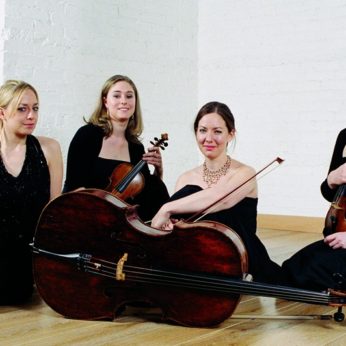Composer: Wolfgang Amadeus Mozart (b. 1756 - d. 1791)
Performance date: 29/06/2009
Venue: Bantry Library
Composition Year: 1772-3
Duration: 00:12:26
Recording Engineer: Anton Timoney, RTÉ lyric fm
Instrumentation: 2vn, va, vc
Instrumentation Category:String Quartet
Artists:
Callino Quartet (Sarah Sexton, Mihaela Girardi [violins], Rebeccca Jones [viola], Sarah McMahon [cello]) -
[quartet]

Copyright © 2024 West Cork Music. All rights reserved.
Designed and developed by Matrix Internet